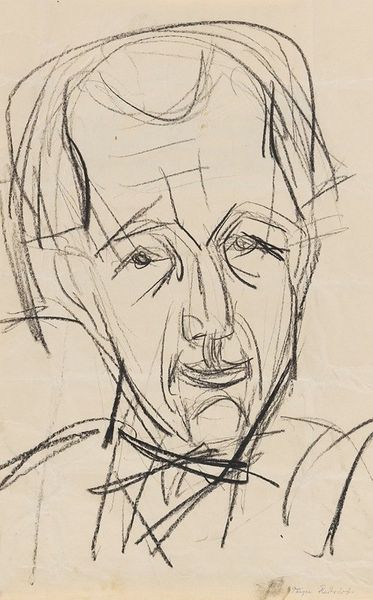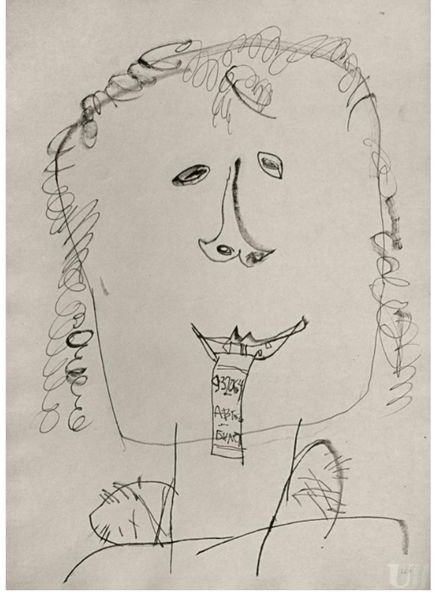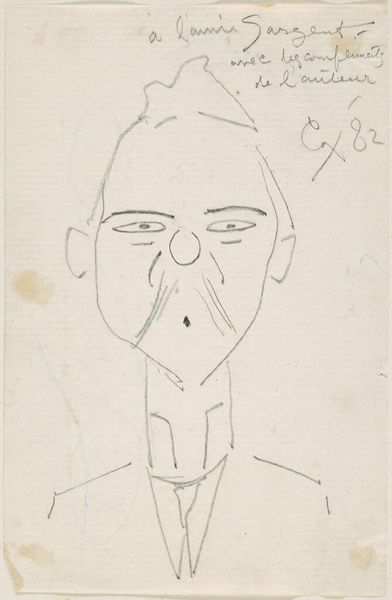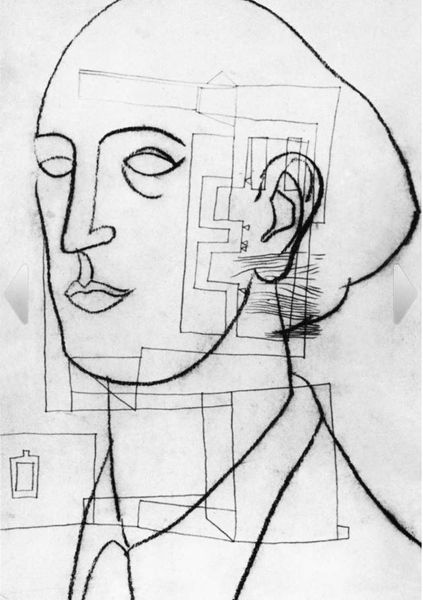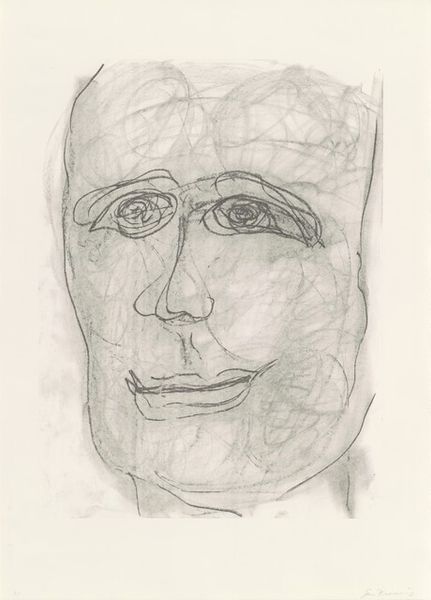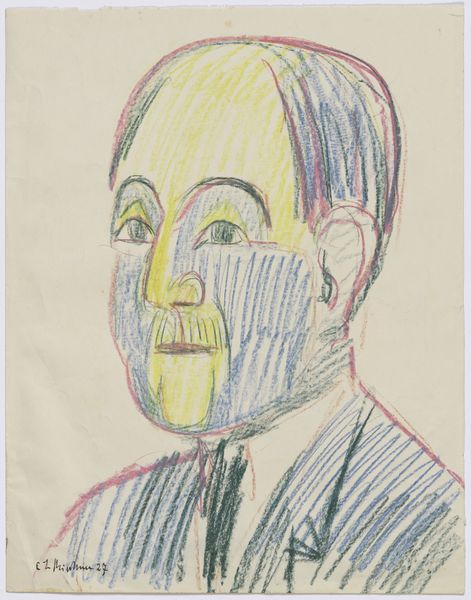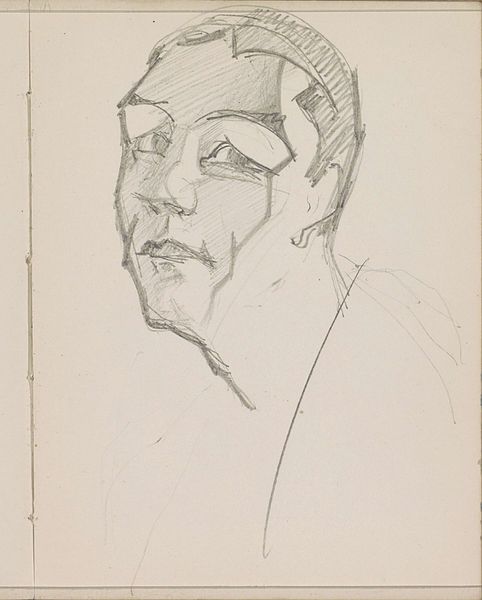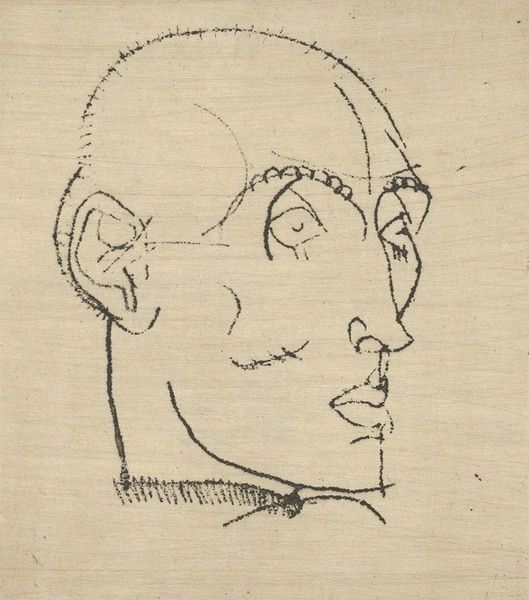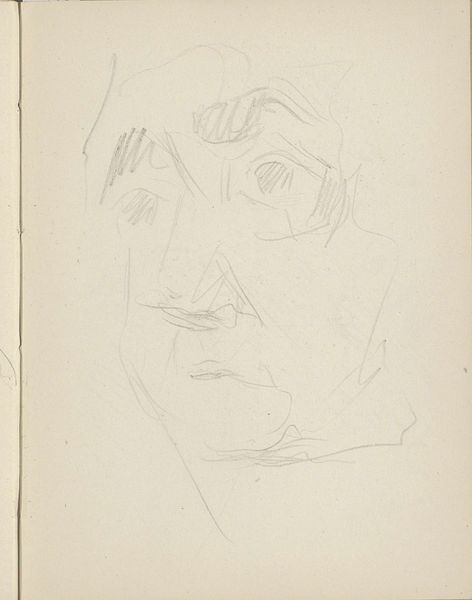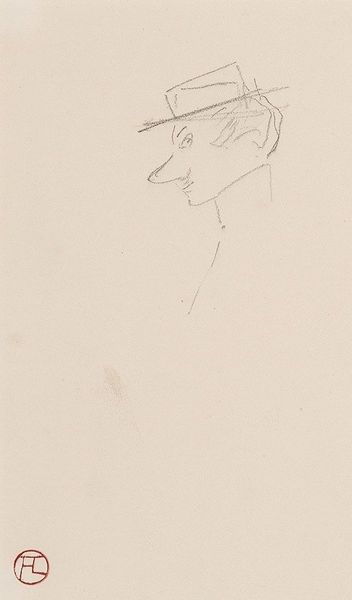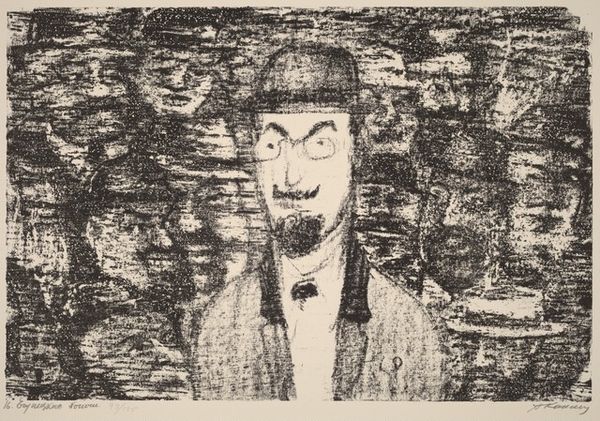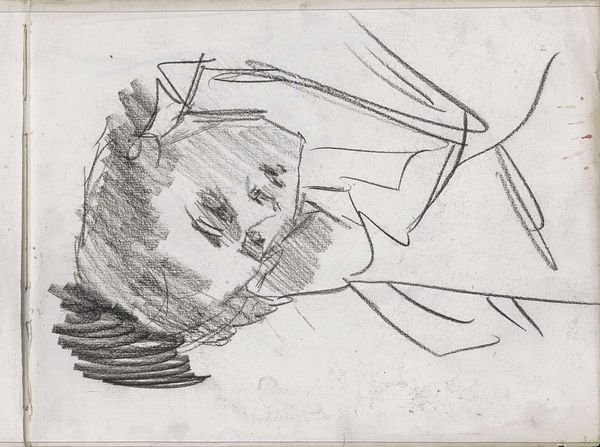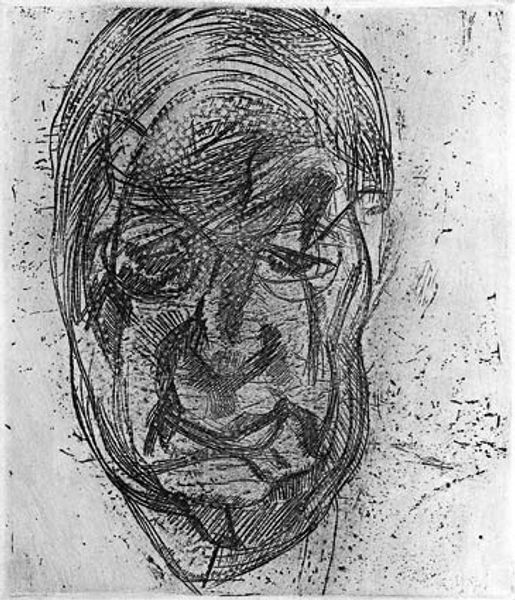
Copyright: Enrico Prampolini,Fair Use
Editor: Today we’re looking at "Ritratto N° 25," a pencil drawing on paper from 1926 by Enrico Prampolini. The figure is formed from simple outlines, almost diagrammatic, yet manages to evoke a striking, if somewhat severe, presence. What stands out to you? Curator: Primarily, the interplay between line and form is significant. Observe how Prampolini uses line not merely to define the subject, but to suggest volume and plane. Note, for instance, the bold, almost brutal lines that structure the brow and jaw. Do you perceive how these angular constructions eschew traditional modeling techniques? Editor: Absolutely, it's a reduction to pure structure, right? There's a definite feeling of geometry taking precedence over realism, it reminds me of cubism. Curator: Precisely. It's crucial to examine Prampolini’s strategic employment of hatching. These parallel lines aren’t for mere shading; they function to flatten certain areas, emphasizing the two-dimensionality of the picture plane while simultaneously proposing spatial recession elsewhere. The Futurists strived to capture the dynamism of modernity within a static medium. How does Prampolini succeed here? Editor: I think the fracturing of the features suggests movement, or at least the potential for it, right? It's not a static, fixed image, but something caught in a state of becoming. Curator: Precisely, in its form, we can see echoes of futurist aesthetic principles where movement, technology and dynamism are exalted through line and form. By dissecting the face, he seems to challenge the conventional understanding of portraiture as mere likeness. Editor: I see. So it’s not just a drawing of a face, but an exploration of form and a declaration of artistic principles. It makes you think about what a portrait can be. Curator: Indeed. Through this exercise of visual parsing, we've arrived at a more profound understanding of the work's compositional mechanics.
Comments
No comments
Be the first to comment and join the conversation on the ultimate creative platform.
